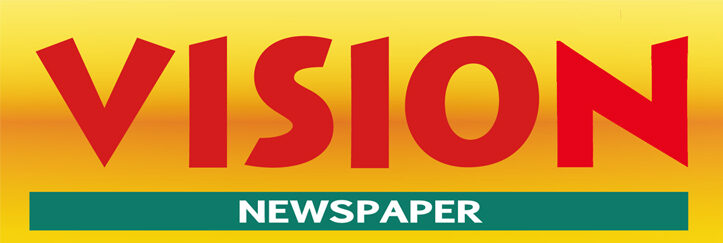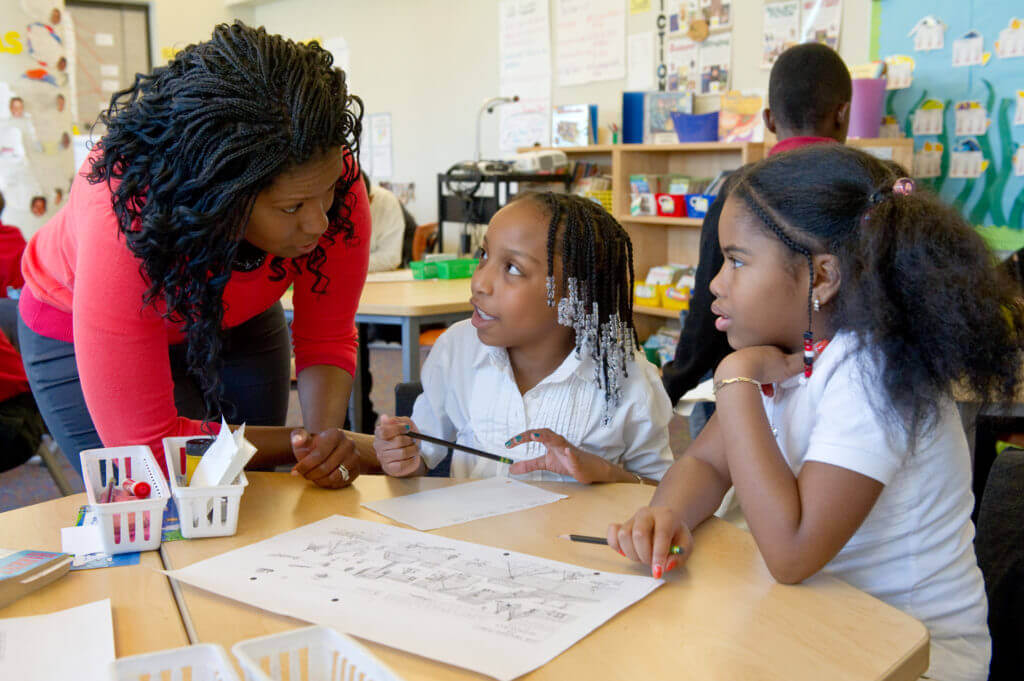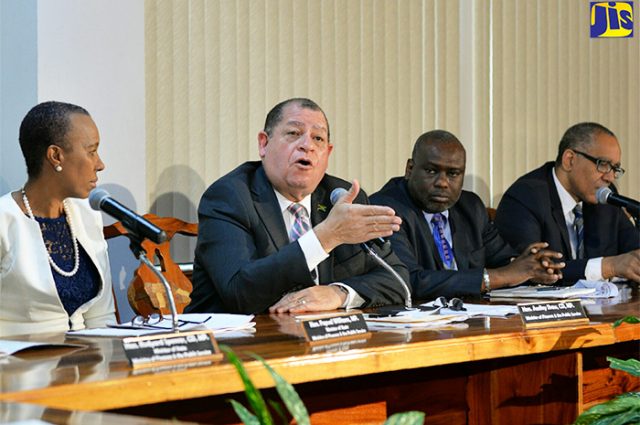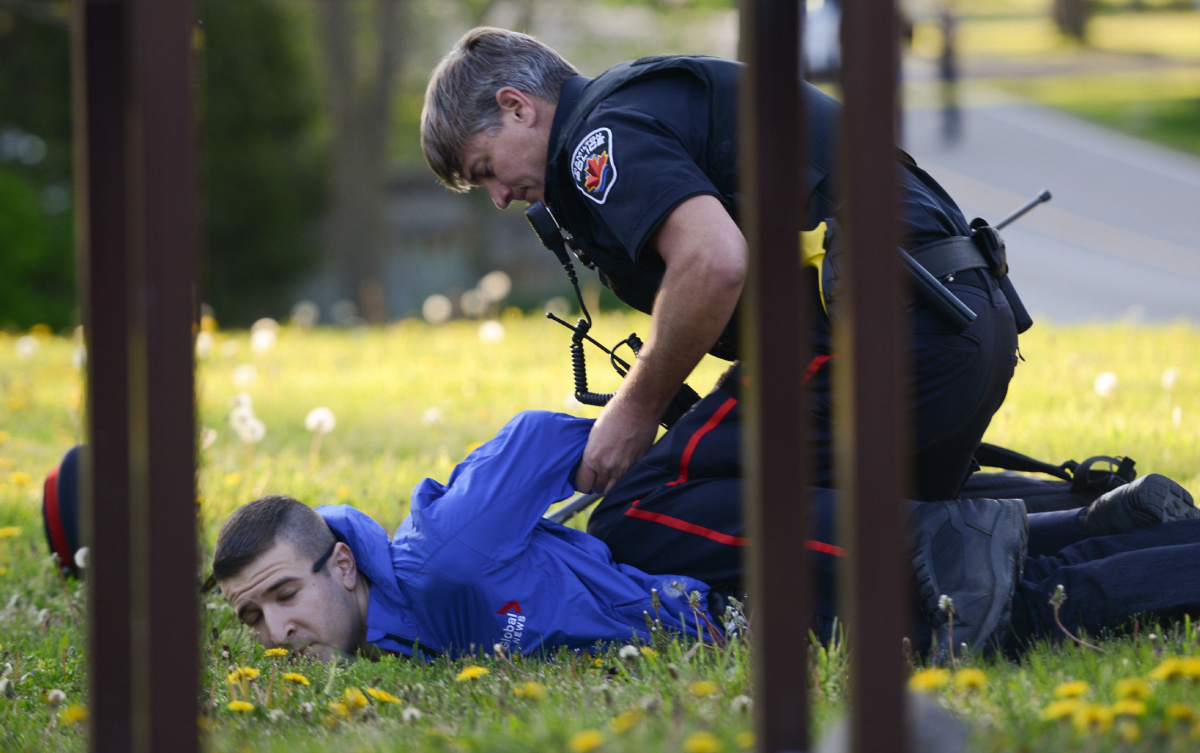TEACHER INDISCIPLINE IN THE CLASSROOM MUST BE ADDRESSED
It is with a sense of of disappointment that I write this article relating to the recent verbal attack at the Pembroke Hall High School in St Andrew, Jamaica with a teacher and two students. I am still in a daze as to how this teacher was able to have “lost it”. What is interesting is that the teacher did not make a blunder with one sentence or a statement but she went on and on depicting a perfect “market tracing scene”. I am glad the teacher at the helm of the story has apologized for her rude behavior. That makes sense but will it save her from being fired by the Board of Management at the school? The matter in question is being investigated by the school, the Ministry of Education, Youth and Information, the Child Development Agency along with the police. The life of one of the children was threatened by the teacher, hence the involvement of the police. The police will need to comb through the video footage for evidence. We have learnt the teacher in question has been sent on leave pending the outcome of the investigation. I am yet to find out how many years teaching experience Ms MarshaLee Crawford has under her belt. May I remind Miss Crawford and other educators of the definition of an indisciplined teacher. Google defines it as “any act or behavior or performance contrary to approved rules and regulations is known as indiscipline. Indiscipline among teachers are acts of behavior that affect effective teaching, learning and administration of the school”. Were the words of the teacher in violation of standards of the Ministry of Education?
Discipline problems challenge most new teachers and even some veteran educators. Good classroom management combined with an effective discipline plan helps keep bad behavior to a minimum so the entire class can focus on learning. One of the concerns of a teacher is to maintain the order of the classroom by ensuring that students are well mannered. This is one way of making certain that learners are learning to the fullest in a pleasant learning environment. There are some times when some form of discipline becomes a necessity. However questions are raised concerning discipline, when is the time to be severe or mild, or where is the line of strictness drawn?
Here are things that we need to know as a teacher and as a disciplinarian:
Are you familiar with the meaning of the word misbehavior?. Misbehavior is behavior that is considered inappropriate for the setting or situation it occurs.
First as teachers we must clarify when a child misbehaves or acts inappropriate. It is not enough knowledge that when a child interrupts the class, then that child is insolent. As such, when a child raises his/her hand to go to the restroom during a discussion, then that is not considered as misbehaving.
Second, clarify to the student what is misbehaving. Set up rules and regulations that are to be observed in your classes. Also emphasize the behavior that you do not tolerate in your class, such as being late, talking while teacher is teaching, not doing assignments any at all or on time, etc. Different teachers may impose different sorts of discipline which might confuse the student. Remember some lower high school students may have 14-16 subjects with 14-16 different teachers so different rules might be hard to apply.
There are different types of misbehavior and each requires a specific treatment or discipline method to be used. According to the book “Building Classroom Discipline”, 6th edition, by CM Charles, Emeritus, Gail W Senter and Karen Blaine Barr, there are three types of discipline 1) preventive 2) supportive and 3) corrective.
PREVENTIVE DISCIPLINE
This provides a motivating curriculum which can grab the interest of the students that they focus on their studies thus, diverting them from misbehaving. This involves showing concern and passion to the students and calling for attention for student improvements.
SUPPORTIVE DISCIPLINE
Supportive discipline assists the misbehaving students with self-control to help them get back on the track. This involves showing interest in the student’s work, providing positive feedback and helping them in some difficulties.
Lastly
CORRECTIVE DISCIPLINE
This includes dealing with the problem directly. However this should neither intimidate the students nor make them uncomfortable. This means one has to stop disruptive behavior if necessary, speak privately with the misbehaving student and invoke consequences for the misbehavior. Watch your students as they come into class and look for signs of discord. For example I recall students entering my grade 10 class in a heated discussion. I gave them five minutes to work out things, lifted my eyebrow a number of times and I looked more prepared than ever. If I saw an element of war-like behavior, I was willing to separate them if possible, and try to gain agreement that during my class time at least, they will drop the issue. In seven minutes they settled down so well that we were able to have two wonderful sessions of Principles of Business.
The last discipline (corrective) would have been the appropriate one to have been used by Miss Crawford. Having watched the video, indiscipline between the two students happened so quickly but the teacher, having been taught classroom management, should have quickly brought the class under control. I have had disruptive students at schools that I have taught but my classroom space puts me in charge.
The article from The Gleaner of Saturday November 23, 2019 stated that the teacher has had this issue in the past. Is it that this video was done as a “sting operation” by the students so the teacher could be caught “red handed?”. While many persons are concerned about the use of cell phones by students in the classroom, the bigger issue is what transpired in the class. Without a student videoing the verbal attack, we would not have had the evidence.
As a teacher at the secondary and tertiary levels for 34 years, having attended and taught at an all boys’ school, during my first week teaching the students, I would get to know each student and what motivates him/her. I would set my rules, discuss it with them so they understood. Then I would ask each of them to write a rule on a strip of paper, go into groups for discussion and then they would state the rule the group will recommend and then to be added to my list. By directing a class discussion, your students will define a set of rules that meet both their criteria and your own. Because they have assisted to set the expectations, they are more likely to follow the rules and to keep one another in check, freeing you to do things that are more important. With this generation, constant reminder is always necessary so every two weeks I would spend 2 minutes reminding them of the rules, to set the stage for a meaningful class session.
Here are some awesome tips I use in the classroom at all times
1) Be Organized
2) Deal with problems right from the start
3) Have good control procedures
4) Teach the procedures well
5) Keep your students engaged
6) Move around the classroom
7) Develop a rapport with the students
8) Be professional at all times
Worry not teachers, discipline and order can be maintained in the classroom with just the right method. Discipline starts with you the teacher. Begin each class period with a positive attitude and high expectations. It will help create a positive learning environment. If you expect your students to misbehave, they probably will. Go to class prepared with lessons for the day. Reduce downtime for students to help maintain order.
If a student becomes verbally confrontational, remain calm and remove them from the situation as quickly as possible but still having control in your class. Do not get into the yelling matches with your students. Avoid bringing the rest of the class into the situation by involving them in the disciplinary process.
Most importantly, let it go at the end of the day. Classroom management and disruption issues should be left at school so you have time to recharge before going back to another day of training. If you do not recharge each day, there will be a pile up and your explosion may have serious repercussions. Taking a day or two to recharge is a good recommendation as the need arises. If you feel constantly overwhelmed, it may be best to seek counselling in stress management and if that doesn’t help, then do the right thing and resign and have someone else take over.
Pray and go with God in the classroom, He has been my Guide and Sustainer in my 34 years of teaching.
One love, one heart, one destiny!!!
Contributed by HE Prof Colin O Jarrett
Senior News Editor




